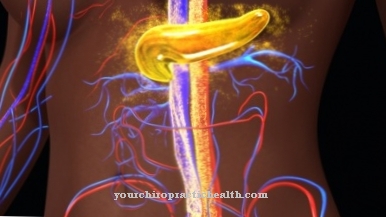Man expresses himself not only with words, but also with gestures and facial expressions. The facial expression has become indispensable in conversations. It conveys feelings and underlines words and gestures non-verbally.
What is the facial expression?

Facial expressions are an essential part of body language. It is also known as a face or facial expression and uses a variety of facial muscles. Their interaction and the contraction of the facial muscles are responsible for the facial expression of humans. Various individual muscle groups are used to create an overall picture - a facial expression.
The mouth and eyes are considered to be the most expressive and are emphasized by the contraction of the muscles. But eyebrows and forehead also play a decisive role. The movements necessary for an overall expression take place within fractions of a second and convey a certain image to the other person.
Together with posture and gestures, facial expressions are one of the most important components of non-verbal communication. The related words "mime" and "mime" are used in the theater sector and are used colloquially for an exaggerated representation. There are also non-verbal plays in which the actors only have to convey the story through their body language. This shows the communicative importance of facial expressions.
In everyday life, facial expressions can underline or refute what has been said and thus trigger different feelings in the conversation partner.
Function & task
Every day, facial expressions fulfill various functions and tasks. First of all, it is partly responsible for the expression of feelings. It expresses emotionality, shows sadness, anger, confusion, skepticism or happiness and is therefore an indispensable part of conversation. In this way, she helps the interlocutor to better assess situations or to understand the current emotional state of the other person.
A lack of facial expressions on the other side quickly causes confusion and confusion, as the words are not additionally underlined. This lacks an important aspect that indicates how what is said is to be received, which also makes the partial limitation of language clear.
In addition, facial expressions have a teaching function and are therefore one of the first interaction factors between parents and children. As a result, the expression has an appeal and communication function and can also be used when the child does not yet understand words sufficiently. In combination with the tone of the voice, the expression plays an important role in babies and toddlers. It is similar in everyday communication with people who do not speak the same language. Interaction is still possible via gestures and facial expressions.
Nevertheless, it is often not easy to interpret the facial expression of a conversation partner. This is related to a certain momentum that every person has. Peculiarities and specific movements of the facial muscles can become certain typical characteristics of a person. Because of this, misinterpretations in facial expressions are not uncommon. Often times, even small changes in expression can express an opposite emotion.
The interpretation of facial expressions is subjective. Different people perceive different expressions differently and interpret them differently. Many interpretations are made instinctively, whereby small things are often misinterpreted by interlocutors. For example, there are misunderstandings that require verbal clarification.
However, facial expressions can hide the actual feelings and cover up emotions. So it is not a sure indicator of what is really going on in the other person.
Depending on the situation in life, correctly used facial expressions can offer decisive advantages. A suitable, non-fake face can have a positive effect during lectures, presentations or interviews.
You can find your medication here
➔ Medicines for muscle paralysisIllnesses & ailments
Facial expressions are disturbed as part of various diseases. These include, for example, various symptoms of paralysis that restrict or even completely block the movements of the facial muscles. Such paralysis can result, for example, from accidents that have caused nerve damage.
In addition, sore muscles or cramps can occur in the face, which cause discomfort for some time, but usually subside quickly. People who suffer from Parkinson's disease often have to struggle with impaired facial expressions in the course of their illness. Depending on the severity, a mask face can occur. The expression becomes rigid.
Apraxia is a disorder of voluntary movements. Therefore, the facial expressions are often affected in those affected. Strokes are common triggers here. But dementia, tumors, multiple sclerosis or alcoholism can also be reasons for apraxia.
Mental illnesses can also affect facial expressions. For example, in schizophrenia patients, facial expressions and gestures may be disturbed. It is not uncommon for the put on facial expression not to match the mood of the sick person. Similar forms can also be observed in people with autism, who, depending on their severity, tend to avoid contact with other people.
Prosopagnosia belongs to the area of facial expression. The term comes from the Greek and describes a disease in which the visual field perception is disturbed. It is a facial blindness in which known people cannot be identified by their facial expressions. Reasons for this can be strokes or accidents that cause damage to the brain. However, some forms of the disease are inheritable. The reasons for this are not yet known.






.jpg)





.jpg)



.jpg)










.jpg)
